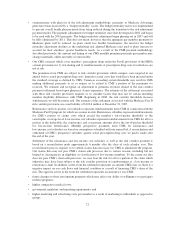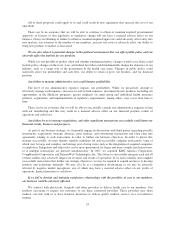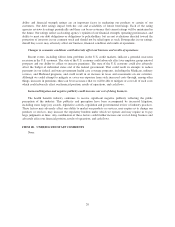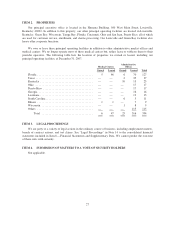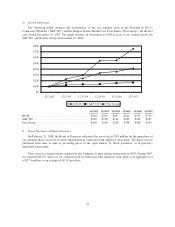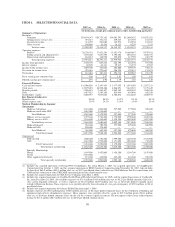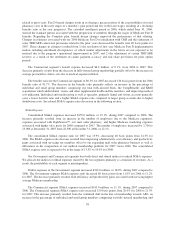Humana 2007 Annual Report Download - page 41
Download and view the complete annual report
Please find page 41 of the 2007 Humana annual report below. You can navigate through the pages in the report by either clicking on the pages listed below, or by using the keyword search tool below to find specific information within the annual report.ITEM 7. MANAGEMENT’S DISCUSSION AND ANALYSIS OF FINANCIAL CONDITION AND
RESULTS OF OPERATIONS
The consolidated financial statements of Humana Inc. in this document present the Company’s financial
position, results of operations and cash flows, and should be read in conjunction with the following discussion
and analysis. References to “we,” “us,” “our,” “Company,” and “Humana” mean Humana Inc. and its
subsidiaries. This discussion includes forward-looking statements within the meaning of the Private Securities
Litigation Reform Act of 1995. When used in filings with the Securities and Exchange Commission, in our press
releases, investor presentations, and in oral statements made by or with the approval of one of our executive
officers, the words or phrases like “expects,” “anticipates,” “intends,” “likely will result,” “estimates,”
“projects” or variations of such words and similar expressions are intended to identify such forward–looking
statements. These forward–looking statements are not guarantees of future performance and are subject to risks,
uncertainties and assumptions, including, among other things, information set forth in Item 1A.—Risk Factors. In
making these statements, we are not undertaking to address or update these factors in future filings or
communications regarding our business or results except as required by law. In light of these risks, uncertainties
and assumptions, the forward–looking events discussed in this document might not occur. There may also be
other risks that we are unable to predict at this time. Any of these risks and uncertainties may cause actual
results to differ materially from the results discussed in the forward–looking statements.
Overview
Headquartered in Louisville, Kentucky, Humana Inc. is one of the nation’s largest publicly traded health and
supplemental benefits companies, based on our 2007 revenues of $25.3 billion. We are a full-service benefits
solutions company, offering a wide array of health and supplemental benefit plans for employer groups,
government benefit programs, and individuals. As of December 31, 2007, we had approximately 11.5 million
members in our medical benefit plans, as well as approximately 6.8 million members in our specialty products.
We manage our business with two segments: Government and Commercial. The Government segment
consists of beneficiaries of government benefit programs, and includes three lines of business: Medicare,
Military, and Medicaid. The Commercial segment consists of members enrolled in our medical and specialty
products marketed to employer groups and individuals. We identified our segments in accordance with the
aggregation provisions of SFAS 131,which aggregates products with similar economic characteristics. These
characteristics include the nature of customer groups as well as pricing, benefits, and underwriting requirements.
These segment groupings are consistent with information used by our Chief Executive Officer.
The results of each segment are measured by income before income taxes. We allocate all selling, general
and administrative expenses, investment and other revenue, interest expense, and goodwill, but no other assets or
liabilities, to our segments. Members served by our two segments often utilize the same medical provider
networks, enabling us to obtain more favorable contract terms with providers. Our segments also share indirect
overhead costs and assets. As a result, the profitability of each segment is interdependent.
Our results are impacted by many factors, but most notably are influenced by our ability to establish and
maintain a competitive and efficient cost structure and to accurately and consistently establish competitive
premium, ASO fee, and plan benefit levels that are commensurate with our benefit and administrative costs.
Benefit costs are subject to a high rate of inflation due to many forces, including new higher priced technologies
and medical procedures, new prescription drugs and therapies, an aging population, lifestyle challenges including
obesity and smoking, the tort liability system, and government regulation.
Our industry relies on two key statistics to measure performance. The benefits ratio, which is computed by
taking total benefit expenses as a percentage of premium revenues, represents a statistic used to measure underwriting
profitability. The selling, general, and administrative expense ratio, or SG&A expense ratio, which is computed by
taking total selling, general and administrative expenses as a percentage of premium revenues, administrative
services fees and other revenues, represents a statistic used to measure administrative spending efficiency.
31


